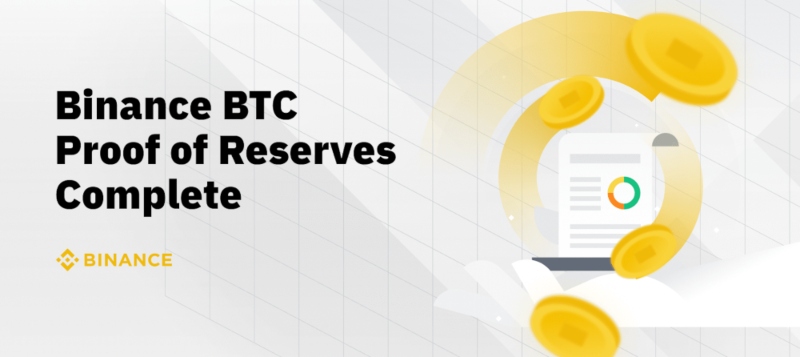Binance Verifies Bitcoin Proof Of Reserves
Binance underwent a proof of reserves verification on 22 November, showing that its Bitcoin holdings were fully collateralized. The aim of the report was to reassure users of the world’s largest crypto exchange that their BTC holdings are in safe hands.
Binance hired accounting giant, Mazars, in the wake of the FTX scandal, which has led to questions about the transparency of the crypto exchanges that dominate the industry.
The crypto giant now joins the likes of Kraken, Gate.io and BitMEX, which have all undergone proof of reserves in recent weeks.

Key Findings
Mazars took a snapshot of Binance’s total reserves and liabilities to establish the collateralization ratio of their BTC holdings.
The ratio on 22 November 23:59:59 UTC was 101%, meaning the exchange has more than enough collateral to cover potential losses in the event of default.
The report from Mazars’ stated: “We conclude that the nominal value of all In-Scope Assets as per the Asset Balance Reports are equal to or greater than the net liability of funds owed to and receivable from the customers as per the Customer Liability Report and therefore meets the definition of being collateralized.”
The independent auditor looked at in-scope assets lent through Binance’s loan and margin products that are collateralized by out-of-scope assets.
Mazards concentrated on Bitcoin assets held on various blockchains, including Bitcoin, Ethereum, Binance Smart chain and BNB chain.
Binance has also stated that proof of reserves for additional tokens will be published shortly.
What Is A Proof Of Reserves Audit?
Proof of reserves audits verify whether a crypto exchange, such as Binance, has assets equal to or greater than the total amount of customer funds it holds. This means an exchange should be able to pay its users in the event of mass withdrawals, as we saw in the FTX saga.
Proof of reserves audits also provide independent reassurance that client funds aren’t being stolen or loaned out without the end user’s consent.
Clients can verify their own Bitcoin holdings through Mazars. Simply paste your Merkle Hash from your Binance account and hit ‘Calculate’.
Secure Asset Fund
Binance also maintains a Secure Asset Fund for Users (SAFU). This emergency insurance fund was valued at around $1 billion in January 2022 and is used to put right customers that suffer losses because of security breaches.
Binance paid out $40 million to users in 2019 when hackers broke into the exchange’s hot wallet, which held approximately 2% of the firm’s Bitcoin assets.
With proof of reserves audits now complimenting the Secure Asset Fund, existing customers and prospective investors should feel reassured that Binance has adequate insurance and accounting procedures to protect its clients’ digital assets.
